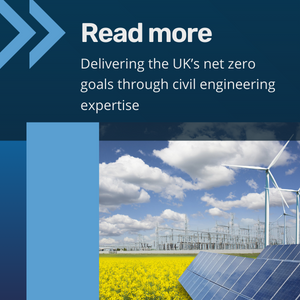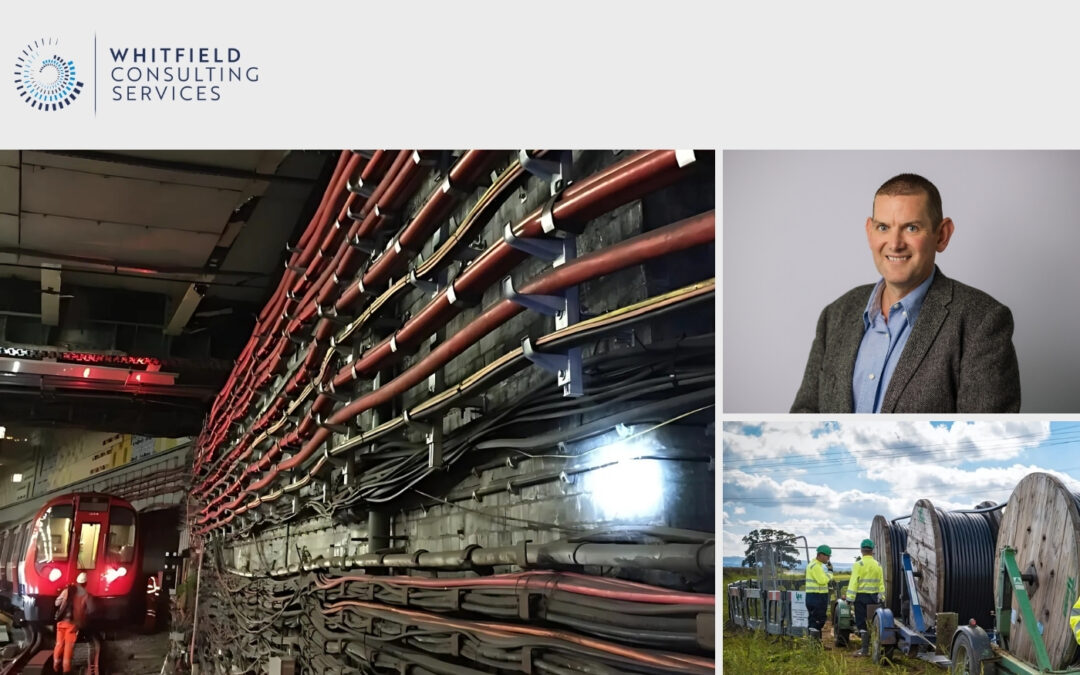Cable route design is a critical component of any grid connection project, involving complex ground conditions and multiple infrastructure interfaces, particularly when navigating dense urban environments.
Despite its importance, cable route design is often overlooked in early planning. The physical route, the engineering decisions behind it, and the temporary works that support installation all determine whether assets can be energised on time – and safely.
We spoke with Nick Lowe, Director at WCS, about the challenges of high-voltage cable routing and how the WCS team unlock viable solutions in some of the most constrained environments.
Why early consideration matters
Cable routes are not always prioritised at the start of a project. “It is often assumed a solution can be found later,” Nick explains. “But when a substation site is fixed without factoring in connectivity, the eventual route might require complex crossings, permissions, or additional works. Sometimes a small change in location could have saved significant cost and time.”
“We’ve seen projects with kilometres of installed cable where a single unresolved crossing, sometimes just 30 metres over a bridge, delays the entire network from going live,” Nick notes. “That’s why early-stage feasibility and optioneering are so important – but at whatever stage the WCS team joins a project, we apply technical knowledge and practical problem solving to deliver a workable solution.”
Key technical challenges
Urban environments introduce significant complexity, with buried utilities, congested corridors, and limited working space. “Space is our biggest challenge,” Nick notes. “London Underground tunnels, for example, were never designed for today’s larger cables. We often have to find ways to make the available space work.”
Bridges and crossings introduce further considerations. “Pre-stressed concrete bridges from the 1950s do not have much capacity for additional loading. If you want to run cables across a structure that is already approaching its limit, you need rigorous structural assessments.”
Other constraints include achieving the minimum depth of cover for safety, maintaining separation from other utilities, and accommodating the cable’s bending radius. “Some cables are 100mm in diameter and require a bend radius of several metres,” Nick explains. “That geometry needs to be designed in from the start.”
Renewable energy and growing congestion
The growing deployment of renewable energy infrastructure, such as solar farms, wind turbines, and electric vehicle (EV) charging networks, is intensifying the demand for grid connections.
Nick explains, “Renewable projects often require cables in corridors that may already be congested with existing utilities and infrastructure. This adds a new layer of complexity to route design.”
He continues, “Without early and detailed planning, integrating these renewable assets can lead to delays caused by difficult crossings or lengthy permissions.”
This rising congestion makes careful cable route design even more critical to ensure renewable energy is delivered efficiently, reliably, and on schedule, avoiding costly rerouting or temporary works.
Engineering the route: methods and approaches
WCS draws on a range of solutions to make routes feasible, from trenching to trenchless techniques such as horizontal directional drilling (HDD) and pipe jacking. “HDD allows us to cross railways or rivers without open excavation, but it comes with its own considerations,” says Nick. “Settlement risk is a major one. If you are drilling under a railway, you need a design that guarantees stability.”
Innovation also plays a role. In one project for the London Underground Power Upgrade, WCS worked with the client, UK Power Networks Services (UKPNS), to develop a bracket system that clips onto existing infrastructure, eliminating the need for new fixings and optimising tight space in tunnels. “The concept came from the client, and we engineered it to make it viable,” Nick says. “Solutions like that require creative thinking, close collaboration, and deep understanding of the constraints.”
Joint bay locations and pulling distances also influence design decisions. Cable drums have fixed lengths, which dictate where joints are placed. “You do not want a joint in the middle of a busy junction,” Nick notes. “We work closely with electrical teams to align drum lengths with practical jointing locations, minimising disruption and temporary works.”
Interfaces and stakeholder engagement
The complexity of cable route design is organisational as well as technical. “Every crossing brings an interface,” says Nick. “For example, Network Rail, highways authorities, and canal trusts all have their own requirements. Early engagement is vital to secure approvals and avoid redesign later.”
Survey data underpins much of this process. PAS 128 utility surveys, geotechnical investigations, and topographic mapping inform the feasibility of each alignment. “Sometimes the utility density in a road makes it unviable,” Nick says. “A different street, or even a longer rural diversion, can end up being faster and cheaper than battling through a congested corridor.”
The Green Recovery programme required the design of several new cable routes connecting UK Power Networks (UKPN) substations to EV charging stations. While some routes passed through less congested areas, others ran through dense urban streets in London, where existing utilities made space extremely limited.
“The urban routes in London were particularly challenging on this project,” Nick recalls. This is where accurate data proved critical. PAS 128 surveys, supported by detailed geotechnical investigations, provided the clarity needed to assess each route. “Those surveys were invaluable,” Nick explains. “They allowed us to identify where routes were unviable and focus on identifying a way forward.”
“While alternative routes may add length on paper,” says Nick, “this approach can avoid major utility conflicts, reduce temporary works, and ultimately accelerate delivery.”
Why WCS is a trusted partner
WCS has built a reputation in cable route design by combining detailed civil engineering knowledge with a practical, delivery-focused approach.
“We’ve been involved in cable route design for more than 15 years,” Nick explains. “That experience means we understand what works, what doesn’t, and where the biggest risks lie. Our input often starts before the route is fixed – we can assess multiple options at the feasibility stage and advise which alignments will save time and cost.”
This capability spans the full lifecycle of route delivery:
- Feasibility and optioneering: Early-stage studies to compare alignments, identify constraints, and assess constructability.
- Integrated design: Close coordination with electrical engineers, survey teams, and geotechnical specialists to ensure civil and electrical requirements are fully aligned.
- Temporary works and sequencing: Designing the access, joint bays, and lifting operations that make cable installation practical and safe.
Case in point: Hills Road Bridge, Cambridge
A recent project illustrates these challenges. WCS was tasked with routing an 11kV cable across Hills Road Bridge, a 1950s pre-stressed structure spanning Network Rail tracks. “The bridge had no spare ducts and very little surfacing depth,” Nick recalls. “To make matters more complex, the bridge was structurally substandard and owned by the local council, but it crossed Network Rail infrastructure. Every decision required detailed structural checks and stakeholder agreement.”
WCS carried out detailed structural assessments to ensure the bridge’s safety was not compromised by additional load. “It was a real test of coordination and technical rigour,” Nick says. The design for the cable routing was approved, with installation now complete.
Three lessons for cable route planning
Nick summarises the essentials:
- Identify obstacles early: “Bridges, railways, utilities – understand the constraints before you lock in your design.”
- Factor in space: “Not just for the cable, but for installation, jointing, and temporary works.”
- Think about constructability: “Sometimes a longer route saves time and cost if it avoids complex crossings and heavy temporary works.”
Contact WCS for support
Effective cable route design is fundamental to the success of any grid connection project. Navigating complex environments, managing technical constraints, and coordinating multiple stakeholders requires expertise and early engagement.
As renewable energy demand grows and infrastructure corridors become increasingly congested, the need for practical, well-considered solutions is more important than ever.
By applying thorough feasibility studies, innovative engineering approaches, and collaborative planning, projects can avoid costly delays and deliver reliable connections that support the evolving energy landscape.
If you think the WCS team might be the right partner for your next project, please get in touch on 020 3581 7847 or at info@wcs-consult.co.uk.

